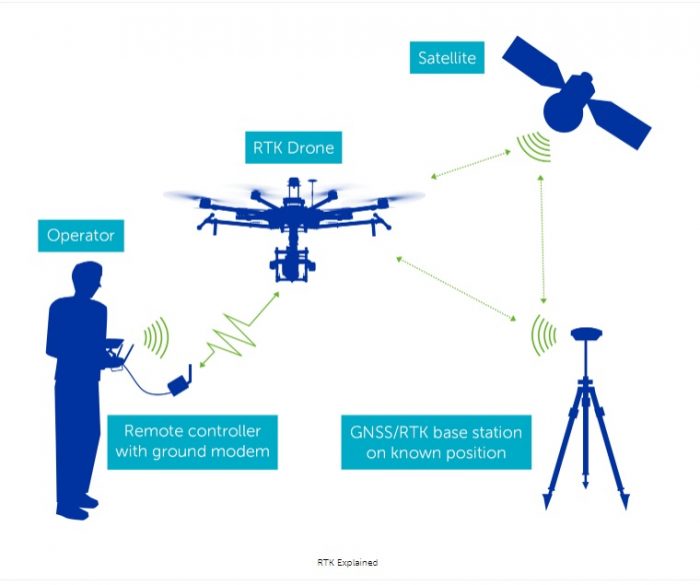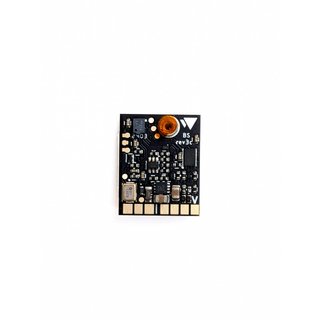SparkNavi Drone Flight Controller and GNSS/INS Made in Taiwan: Blazing A Trail in Drone Technology
SparkNavi Drone Flight Controller and GNSS/INS Made in Taiwan: Blazing A Trail in Drone Technology
Blog Article
Comprehending the Crucial Attributes and Functions of a Drone Flight Controller for Ideal Airborne Efficiency
The flight controller functions as the essential element in a drone's design, orchestrating its activities and ensuring security with an innovative interaction of sensors and data processing. Recognizing the essential functions and functions of these controllers is vital for optimizing aerial performance, as they dictate not only navigational accuracy however also total security and dependability. With developments in technology, the landscape of flight controllers is quickly developing, motivating a better evaluation of what absolutely specifies optimum functionality in this critical system. What ramifications do these developments hold for both enthusiasts and professionals in the area?
Overview of Trip Controllers
When exploring the world of drone technology, recognizing trip controllers is crucial for both hobbyists and professionals alike. Trip controllers act as the brain of the drone, coordinating its motions and making certain security during trip (SparkNavi drone flight controller and GNSS/INS made in taiwan). They process information from various sensors, consisting of gyroscopes, accelerometers, and barometers, to preserve equilibrium and respond to pilot inputs effectively
The style of trip controllers can differ substantially, varying from basic versions developed for entry-level drones to sophisticated systems outfitted with advanced attributes for professional applications. The assimilation of GPS abilities enables specific navigation and positioning, while programmable firmware allows users to customize flight attributes to match their specific needs.
Additionally, flight controllers are crucial in facilitating interaction in between the drone and the remote, allowing real-time modifications and telemetry data transmission. Understanding the various kinds of flight controllers, including multi-rotor, fixed-wing, and hybrid systems, is crucial for picking the proper version for a provided application. Inevitably, a comprehensive grasp of trip controllers not just boosts the flying experience but additionally makes best use of the efficiency and security of drone operations.
Trick Features of Flight Controllers
Flight controllers play a crucial role in handling a drone's trip dynamics by executing numerous vital features that ensure stability and responsiveness. Among the primary functions is the stabilization of the drone's positioning and elevation. This is accomplished via the assimilation of different sensing units, including barometers, accelerometers, and gyroscopes, which continuously monitor the drone's position and motion.
.jpg)
An additional necessary function is the handling of control inputs from the pilot or independent systems. The trip controller interprets these inputs and changes the drone's motor rates appropriately to accomplish the preferred flight path. This consists of handling roll, pitch, and yaw, which are essential for maneuverability.
Additionally, trip controllers are geared up with sure systems. These functions are developed to respond to vital situations, such as reduced battery degrees or loss of signal, by starting predefined activities like going back to the launch factor or floating in position.

Vital Attributes to Take Into Consideration
Various vital features must be thought about when picking a drone flight controller to ensure optimum efficiency and dependability. One essential element is the controller's processing power, which determines its capability to manage intricate trip algorithms and real-time data handling. A greater processing ability boosts responsiveness and stability throughout flight.
Another vital feature is the variety of sustained trip modes. A flexible flight controller should supply various modes, consisting of acro, elevation hold, and GPS-assisted settings, satisfying different pilot skill degrees and operational circumstances. In addition, the visibility of built-in security attributes, such as fail-safes and geofencing, can considerably improve functional security.
Compatibility with various communication protocols is likewise essential, as it makes certain smooth assimilation with various other gadgets and peripherals, such as remote controllers and telemetry systems. The controller's firmware should be easy to use and frequently updated to incorporate brand-new attributes and optimizations.
Combination With Sensing Units and Solutions
A trip controller's performance is heavily influenced by its capability to integrate with various sensing units and systems. This assimilation is important as it enables the flight controller to obtain real-time data needed for efficient flight administration. Key sensors include GPS, inertial measurement devices (IMUs), barometers, and magnetometers, each supplying important information pertaining to the drone's placement, orientation, and altitude.

Additionally, progressed trip controllers support assimilation with haul systems, consisting of electronic cameras and various other sensors, enabling improved functionalities such as self-governing navigating and barrier avoidance. This interconnectedness not only improves the drone's functional abilities yet also broadens its application prospective across different industries, from aerial photography to agricultural monitoring. Hence, a well-integrated flight controller is fundamental for accomplishing optimum airborne efficiency and making sure the reliability of drone operations.
Tips for Optimizing Performance
To optimize the performance of your drone, numerous essential techniques can be used that concentrate on maximizing both equipment and software application elements. Ensure that the flight controller firmware is up to date. Producers regularly launch updates that enhance security, improve functionality, and repair pests. Routinely checking for these updates can substantially affect your drone's performance.
Next, adjust your sensing units, including the accelerometer and gyroscope, to ensure accurate analyses. Correct calibration minimizes drift and enhances trip stability, specifically throughout complicated maneuvers. Additionally, consider upgrading the hardware elements, such as electric motors and propellers, to enhance thrust additional resources and effectiveness. Top notch props can minimize drag and rise flight time.
Moreover, optimize your drone's weight by reducing unneeded hauls. A lighter drone not only carries out much better but also extends battery life. Ultimately, tweak your trip settings, consisting of PID (Proportional, Integral, Acquired) worths, to achieve smooth and responsive handling. By executing these approaches, drone operators can significantly enhance airborne performance, causing a much more satisfying and efficient flying experience.
Final Thought
In verdict, a comprehensive understanding of drone trip controllers is critical for improving aerial performance. By prioritizing these components, operators can considerably elevate the performance and integrity of their drone systems in varied applications.
Trip controllers serve as the mind of the drone, managing its motions and making certain stability throughout trip.Flight controllers play an essential role in managing a drone's trip dynamics by carrying out numerous key functions that ensure security and responsiveness. The trip controller interprets these inputs and changes the drone's motor speeds appropriately to accomplish the desired trip course.Numerous vital important source functions must like it be taken into account when picking a drone trip controller to make sure optimum efficiency and dependability. Hence, a well-integrated trip controller is essential for accomplishing ideal airborne efficiency and ensuring the reliability of drone procedures.
Report this page